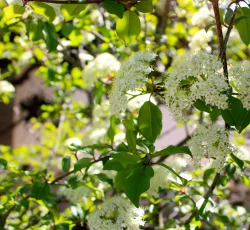
Alfalfa
Medicago sativa
This plant is used as a perennial fodder crop for livestock.
EXPLORE THIS PLANT
This plant is used as a perennial fodder crop for livestock.
EXPLORE THIS PLANT
This native plum has a sprawling habit, which showcases the beautiful white flowers in spring and the unique pink plums in midsummer. The plants become scaly with age and are somewhat disease prone.
EXPLORE THIS PLANT
This underappreciated stone fruit has lovely blossoms early in the spring. Because of their early bloom time, the flowers are susceptible to freezing.
EXPLORE THIS PLANT
All parts of this bold shrub are fragrant. It particularly deserves its name for the profusion of amethyst purple berries borne on its long branches.
EXPLORE THIS PLANT
A cottage garden favorite, black-eyed susan features masses of ferociously yellow flowers that attract butterflies. They are incredibly hardy and tolerate a wide variety of conditions, making them ideal for naturalizing.
EXPLORE THIS PLANT
These large spring blooming shrubs with edible berries do best in natural areas where they can achieve their full size.
EXPLORE THIS PLANT
This large plant is used to make brooms. However, it is not a true corn.
EXPLORE THIS PLANT
Brown-eyed Susans form masses of bright gold flowers above dark green foliage. It will flop without a midseason trim to keep it from getting too tall. It is ideal for naturalizing because it reseeds readily.
EXPLORE THIS PLANT
Chinaberry is a fast-growing deciduous tree often made of several smaller trunks, as it is able to readily sprout from the roots. The widely spreading crown, pale purple tube-like fragrant blooms, and attractive yellow drupes that persist all winter made it a popular ornamental shade tree in southern yards during the 1900s, but now it is noted for its invasive qualities, naturalizing along roadsides and fence rows. Many animal species - including cattle, sheep, goats, pigs, dogs, rats, rabbits, guinea pigs, poultry and humans - have been poisoned by chinaberry, usually by ingesting the fallen fruit.
EXPLORE THIS PLANT
The fig tree dates back to ancient times and is an important source of food for many cultures. Flowers are borne inside the fig structure (syconium), and the fig is ripe and at its sweetest when it softens and turns dark late in the season. Coarse-textured leaves, which are large and deeply lobed, are immediately eye-catching in the garden.
EXPLORE THIS PLANT